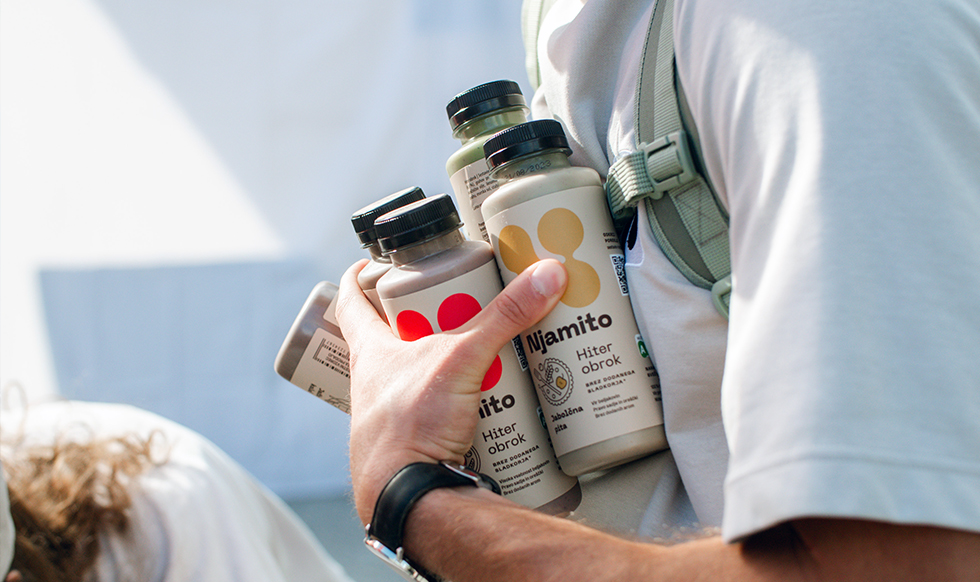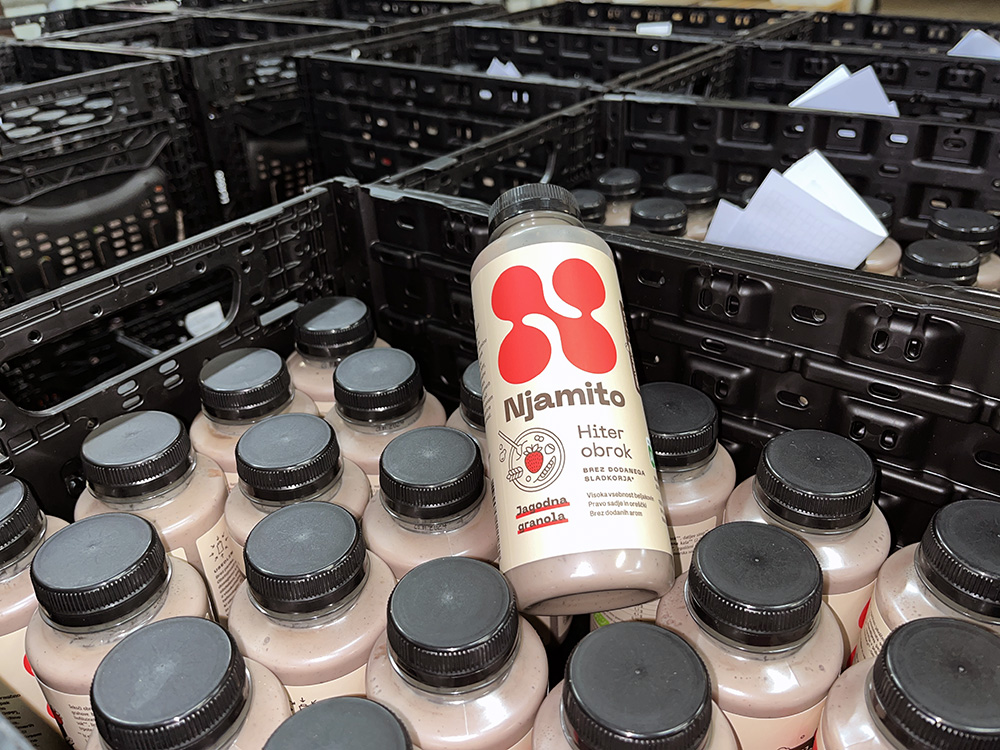How We Handle Late Weeds in Organic Flax
June 25, 2025Ahead of this year’s flax harvest, we tackled late-stage weeds with the Top Cut Collect. Learn how we cleaned up the field and why it was worth it.
Read articleNjamito needed a bottle. Between glass, bioplastic and PET, here’s what we picked, and why.

In their pursuit of the freshest taste and optimal nutritional properties, the Njamito team took great care in determining every detail of the product, including packaging.
Wanting to remain true to maintaining Njamito’s signature natural taste, and creating as little impact on its nutritive elements as possible, we have decided to avoid thermal treatment in our production, and instead use the innovative technology, called High-Pressure Processing (HPP). This technology allows Njamito to maintain the highest level of freshness, and nutrients, as well as its iconic natural taste. Everyone can probably agree that a fresh strawberry tastes better than a cooked one.
The HPP process involves subjecting packaging to an extremely high pressure, and so Njamito’s bottle had to be chosen carefully.
In the spirit of sustainability that drives our food development team, the first thought that came to mind was a glass bottle. Legend has it that glass bottles are always better than anything else. But we found out differently.
Glass is heavier than plastic, increasing transportation-related energy consumption and connected greenhouse gas emissions. The environmental impact of transportation becomes even more significant over longer distances. Additionally, the production of glass requires higher energy inputs compared to some plastic manufacturing processes.
And finally, not wishing to compromise the use of HPP technology, we understood that the glass bottle had to exit the race, as it would break during the process.

Bioplastic is fantastic? Well, Almost.
Bioplastics emerged as the promising new player in the game, crafted from nature’s bounty. They bring environmental benefits by reducing dependence on finite fossil fuels, lowering greenhouse gas emissions, and providing end-of-life options through biodegradability and compostability.
However, bioplastics remain a complex option with limited infrastructure for managing their end-of-life, and recycling issues. Not forgetting that their higher price could translate into Njamito becoming costlier, which is also something that we wished to avoid.
Even though bioplastics had to exit the race as well, we continue to closely monitor the technology to understand when it is ready to become the new choice for Njamito both in terms of cost and reliability.
Enter the reliable sidekick – recycled PET (Polyethylene Terephthalate) bottle. We chose bottles made of 97% recycled plastic. This means that they have already been used and recycled to become Njamito’s new package. And it can be further recycled with the rest of plastic bottles.
This compromise allows Njamito to be treated with HPP technology, extending its shelf life without sacrificing fresh natural taste.
We’re keeping it real, knowing that the journey to the perfect package is a wild ride filled with choices, twists, and a commitment to keeping it fresh, tasty, and green. As Njamito’s search for a perfect bottle continues, we keep looking for the optimal solution, balancing nutrition, taste and sustainability of the product at every step.
Ahead of this year’s flax harvest, we tackled late-stage weeds with the Top Cut Collect. Learn how we cleaned up the field and why it was worth it.
Read articleWe’re back in the field with our chickpea cultivation series! See how we tackle weeds after emergence using inter-row cultivation.
Read articleTwo days, three farms, one shared goal: growing hemp more sustainably. Here’s what we learned and shared during our tour of Prekmurje.
Read article